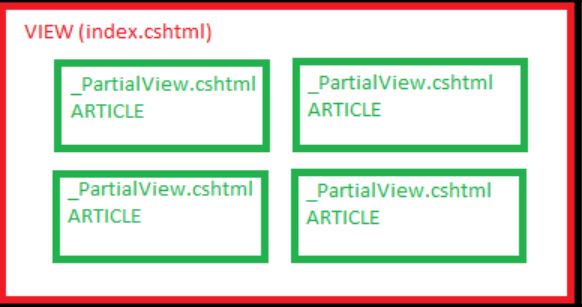`
MVC-Partial View
A Partial View in ASP.NET MVC is a reusable view component that represents a portion of a web page. It is typically used to render small, self-contained parts of the UI, such as headers, footers, menus, or widgets, and can be shared across multiple views to promote reusability and modularity.

When to Use Partial Views
- Shared UI Components - Reusable elements like headers, footers, navigation menus, etc.
- Breaking Down Large Views - Simplify complex views by splitting them into smaller, manageable chunks.
- Dynamic Content - Use partial views to load content dynamically based on user actions.
- Separation of Concerns - Keep the logic and UI for a specific feature modular and maintainable.
How to Create a Partial View
- Add a new view file in the Views folder or a subfolder, usually named with a leading underscore (e.g. _PartialViewName.cshtml) to indicate it’s a partial view.
- Write the HTML/markup and Razor code for the partial view.
Rendering a Partial View in a Parent View
1. Using Html.Partial
@Html.Partial("_PartialViewName", model)2. Using Html.RenderPartial
@Html.RenderPartial("_PartialViewName", model)3. Using Html.Partial or RenderPartial
@Html.Partial("_ProductDetails", productModel)Partial View vs View
| Feature | Partial View | View |
|---|---|---|
| Purpose | Represents part of a view. | Represents a complete web page. |
| Layout Rendering | Does not use a layout by default. | Uses a layout by default (e.g., _Layout). |
| Reusability | Can be reused across multiple views. | Typically used for a specific action. |
| Controller Action | Cannot directly call controller actions. | Directly tied to a controller action. |
Next
